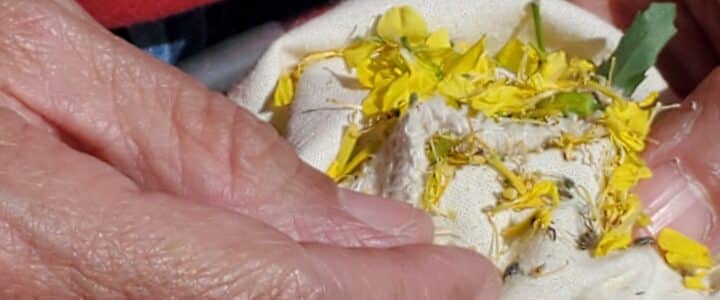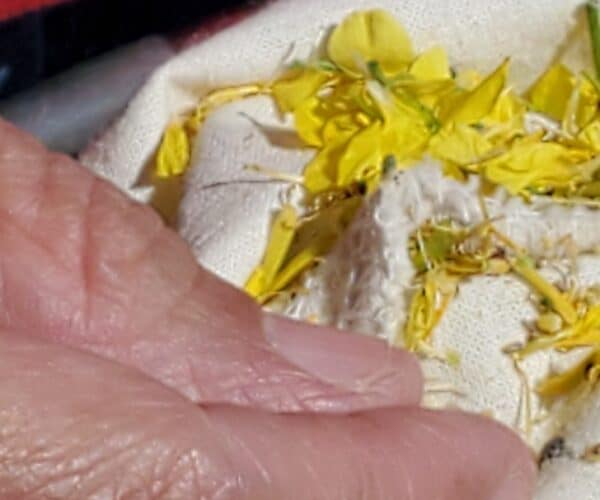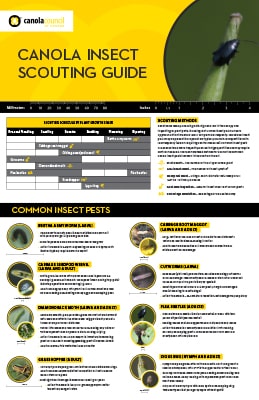Now that all the insect survey data has been compiled, processed, and made available in provincial and Prairie maps, a complete picture of the insect status in the 2023 growing season can be considered. Keeping in mind which actions (management decisions) were taken on your farm, the insect populations in your area and the outcomes that resulted, an assessment of what worked and what can be improved on for the 2024 growing season.
Prairie-wide insect monitoring
The Prairie Pest Monitoring Network (PPMN) continues to provide annual Prairie-wide insect population distribution maps of key insect pests that impact canola fields, including bertha armyworm, cabbage seedpod weevil, diamondback moth, grasshopper and swede midge. Reviewing insect distributions and population trends over time and across multiple provinces, may show trends in distribution to help you better prepare for which insects to look for at the proper crop stage timing, conditions and parts of the plant.

Apply this research on your farm
- Subscribe to the week PPMN e-newsletters.
- Support surveys in your province.
- Review provincial and prairie insect survey maps and check out the grasshopper risk maps in this blog.
- Use resources to ensure you/your agronomist use proper scouting technique, make accurate identifications and use current Economic thresholds for informed decisions.
- Learn more about the Field Heroes in your crops, and ensure you/your agronomist can easily identify them.
The PPMN also provides wind trajectory reports to help inform the arrival of diamondback moth and aster leafhoppers from the southern US. Monitoring protocols, insect research and helpful field guides are available on the PPMN website, as well. Subscribing now to ensure you don’t miss any updates or insect-of-the-week features for the 2024 growing season.
Support provincial surveys
- Saskatchewan – Volunteer access to your farmland for insect, plant pathogen and disease surveys in 2023, please visit Pest Monitoring in Saskatchewan.
- Alberta – Email shelley.barkley@gov.ab.ca to allow insect surveyors access to your land in Alberta. You’ll also receive the results of the fields visited.
- Manitoba – subscribe to receive Manitoba Crop Pest Updates as they are posted.
2023 insect monitoring stops
The PPMN is comprised of field crop entomologists conducting research and monitoring insect pest populations to support crop protection programs on the Canadian Prairies. It includes researchers from Agriculture and Agri-Food Canada, Manitoba Agriculture, Saskatchewan Ministry of Agriculture, Alberta Agriculture and Irrigation, and university researchers. Industry stakeholders also provide regular input and valuable insight at annual PPMN working group meetings.
The 2023 PPMN insect survey for bertha armyworm (n=661), cabbage seedpod weevil (n=578), diamondback moth (n=181), grasshopper (n=3191), pea leaf weevil (n=449), wheat midge (n=602) and wheat stem sawfly (n=87) totaling 5749 stops, shown on the map and reported on in the PPMN 2023 Prairie-wide maps report. For more details, see the Western Forum on Pest Management’s (WFPM) 2023 insect reports for B.C., Alberta, Saskatchewan and Manitoba.
For quick reference, use the Canola Council of Canada’s Canola Insect Scouting Guide or the Ministry of Saskatchewan’s Economic Thresholds table (shown).
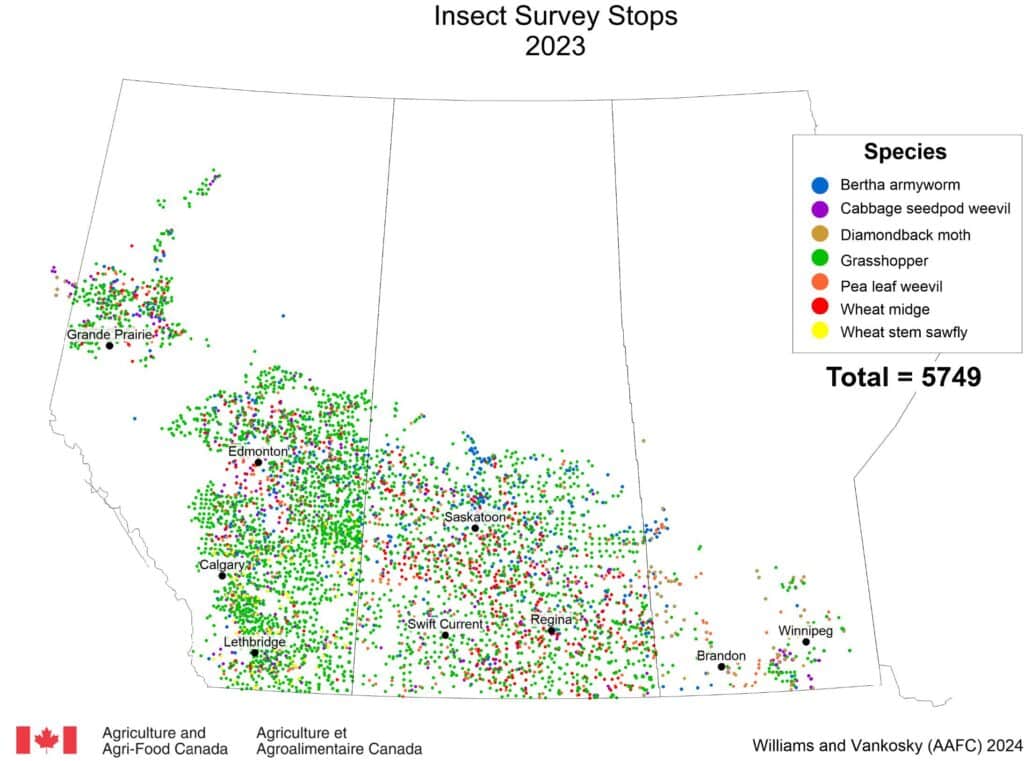
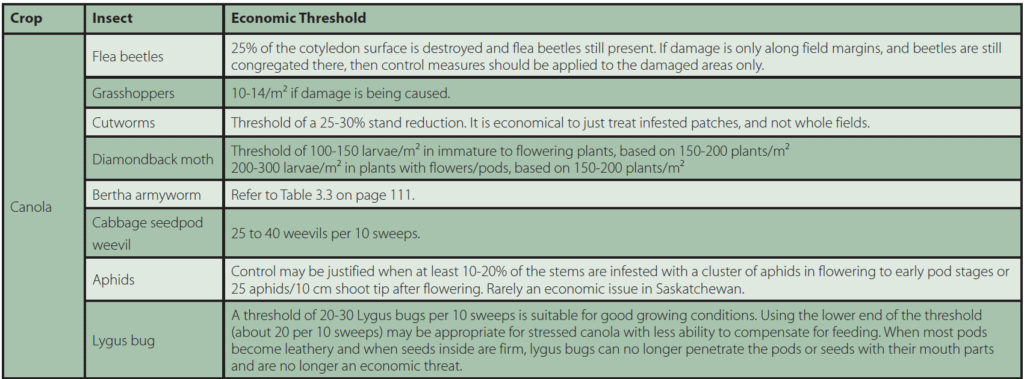
Cabbage seedpod weevil maps
Results from the 2023 survey indicated that cabbage seedpod weevil numbers were low in most areas of Alberta and Saskatchewan, except for some sites in the southwest (SK) in 2023. Overall numbers for Manitoba were quite low, but the known range of cabbage seedpod weevil in Manitoba expanded in 2023, as noted in the WFPM 2023 provincial insect reports.
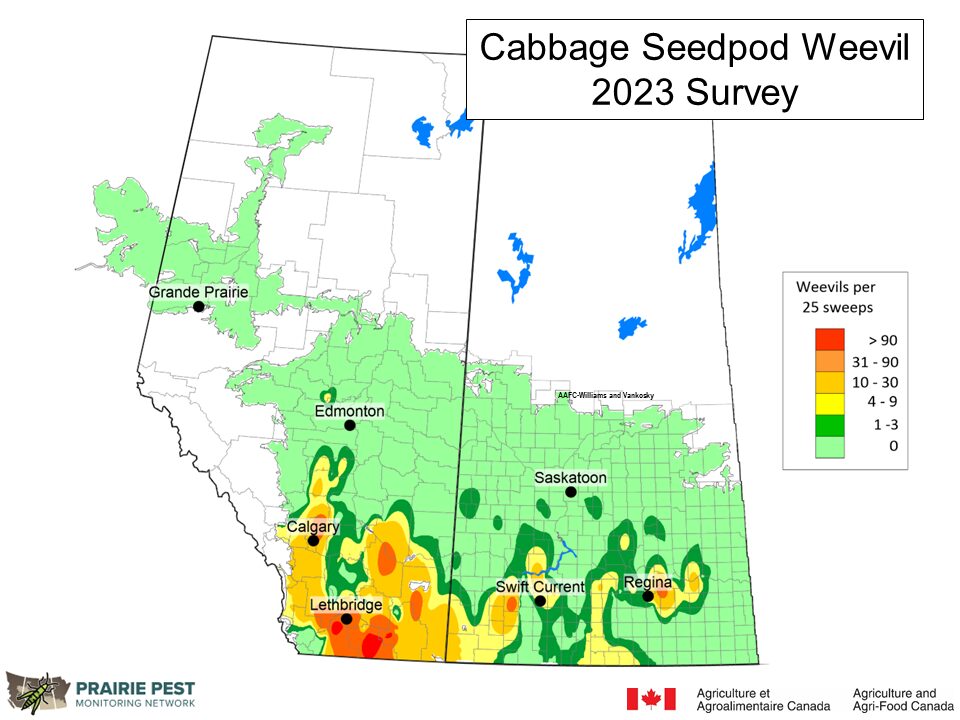
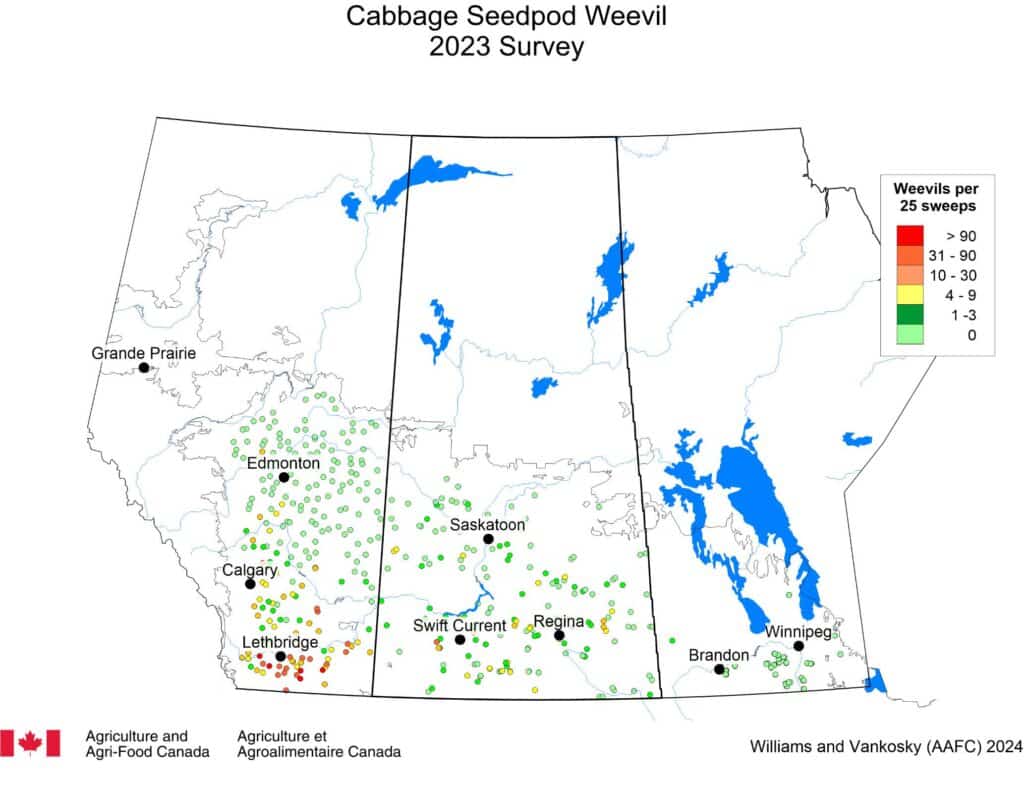
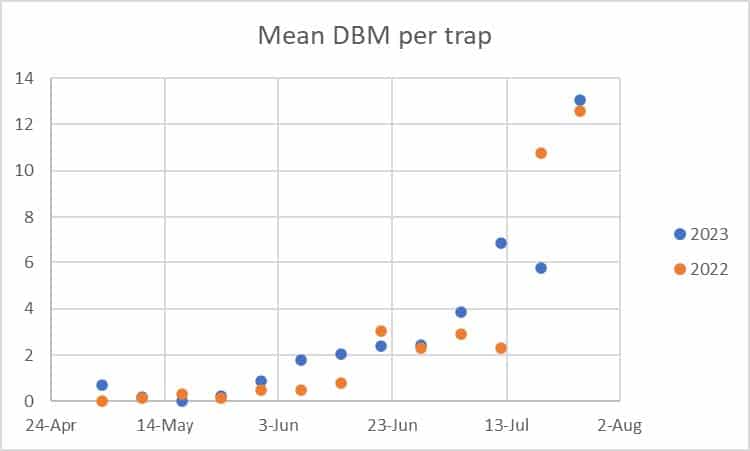
Swede midge, bertha armyworm and diamondback moth maps
- Swede midge: The Prairie Pest Monitoring Network was pleased to report that no swede midge were caught in pheromone traps in the 2023 survey (as shown in the graph).
- Bertha armyworm: The WFPM 2023 provincial insect reports indicated that bertha armyworm populations in Alberta in 2023 were all below the first warning level, and numbers were less in Saskatchewan in 2023 than in the last 5 years. The numbers in Manitoba were slightly higher than 2022, with most traps at low risk, but some areas had higher numbers.
- For more details, review Manitoba’s armyworm trap results.
- Diamondback moth: All but one of the 2023 diamondback moth survey locations reported low counts in Alberta. However, Saskatchewan reported wind trajectories were favorable to bringing in the moths and average capture numbers and population trends in 2023 were similar to 2022. Manitoba reported canola fields in several regions having notable diamondback moth populations in July and August, as indicated in the WFPM 2023 provincial insect reports.
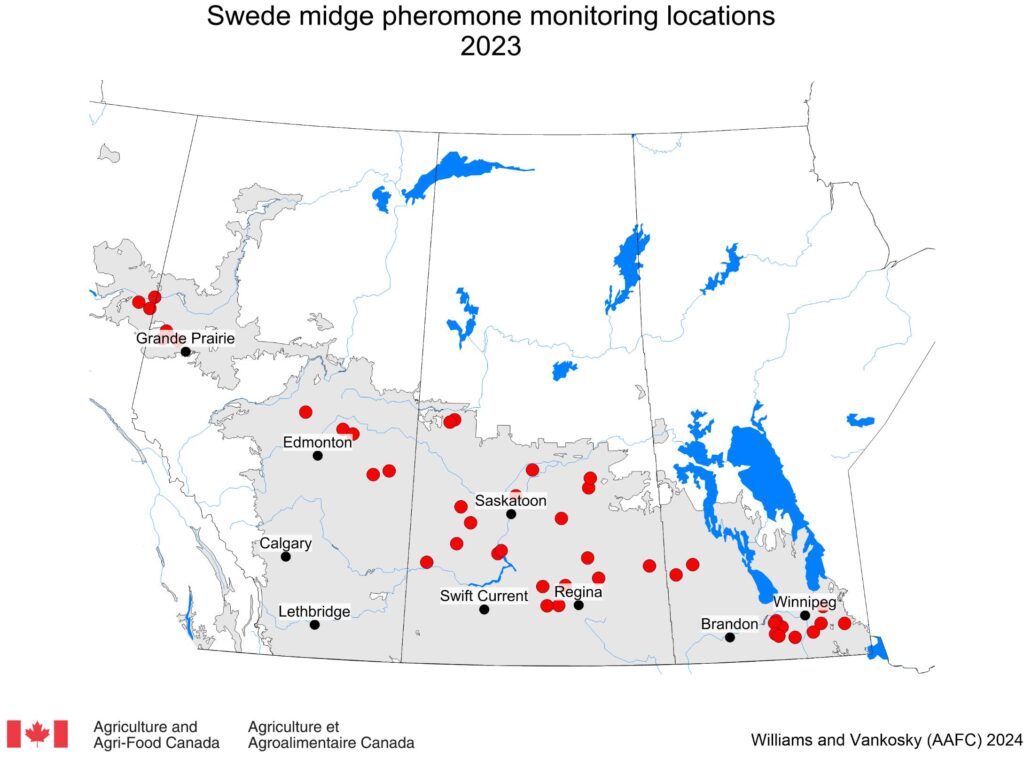
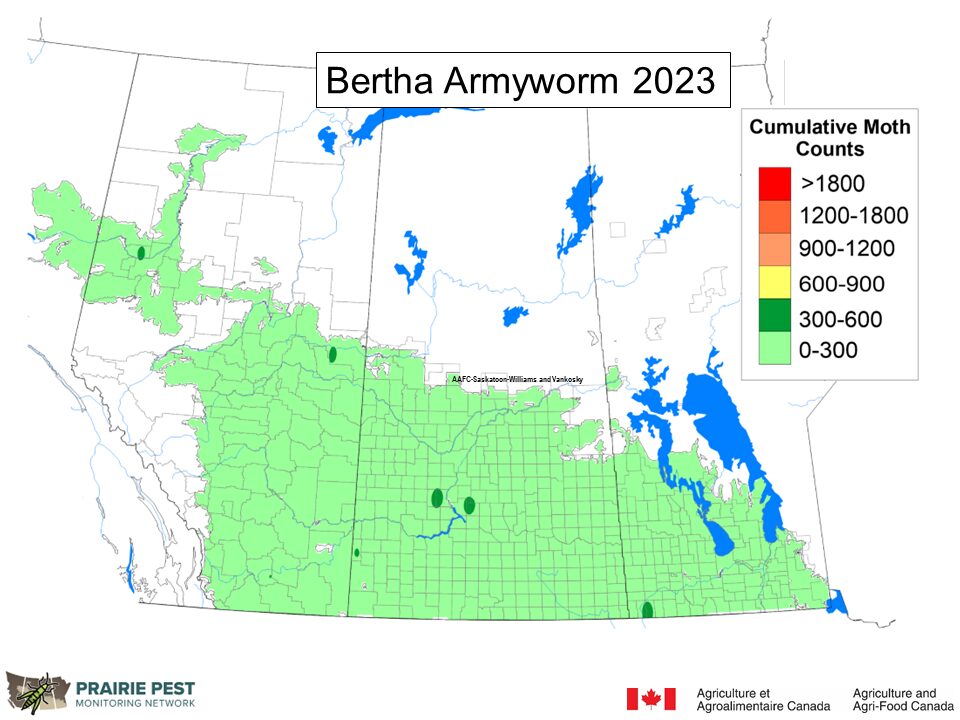
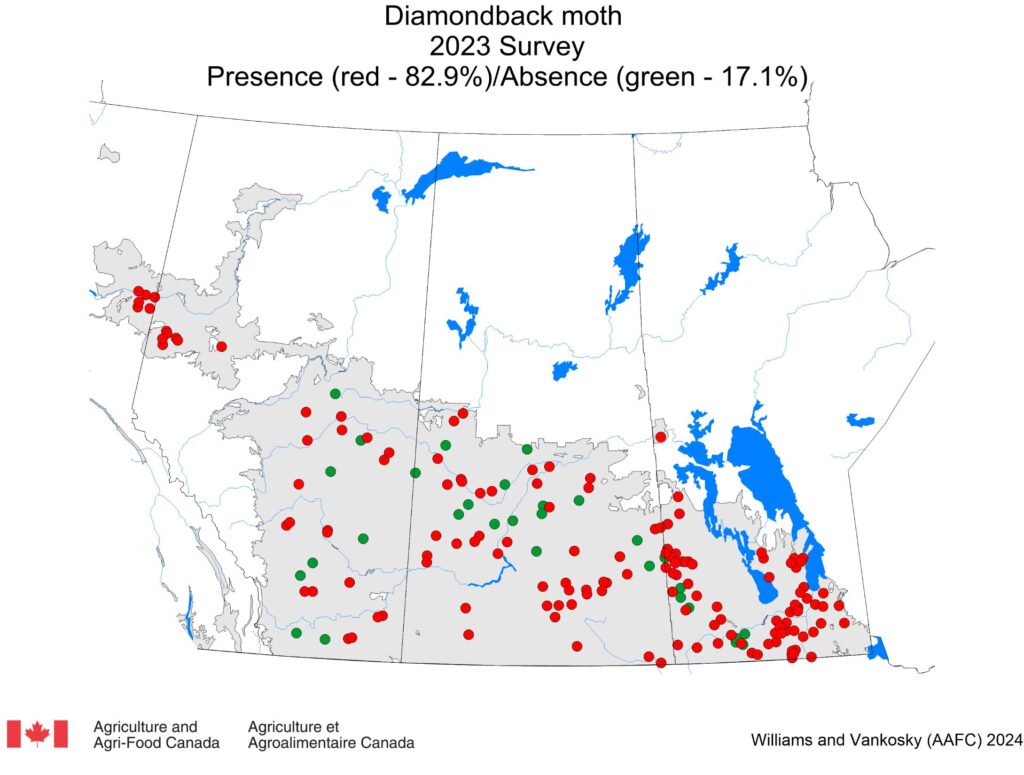
Grasshoppers
- The WFPM 2023 provincial insect reports shared that there were some reports of high levels of grasshoppers in canola in Manitoba, especially in the Southwest, Central and Interlake regions.
- There were also widespread reports of grasshopper feeding in canola and mustard in Saskatchewan, beginning with nymphs feeding on seedling crops in late June, early July.
- In Alberta, grasshoppers were one of the biggest challenges in 2023 across many crop types, with preliminary grasshopper data indicating the grasshopper densities increased in 2023 compared to 2022.
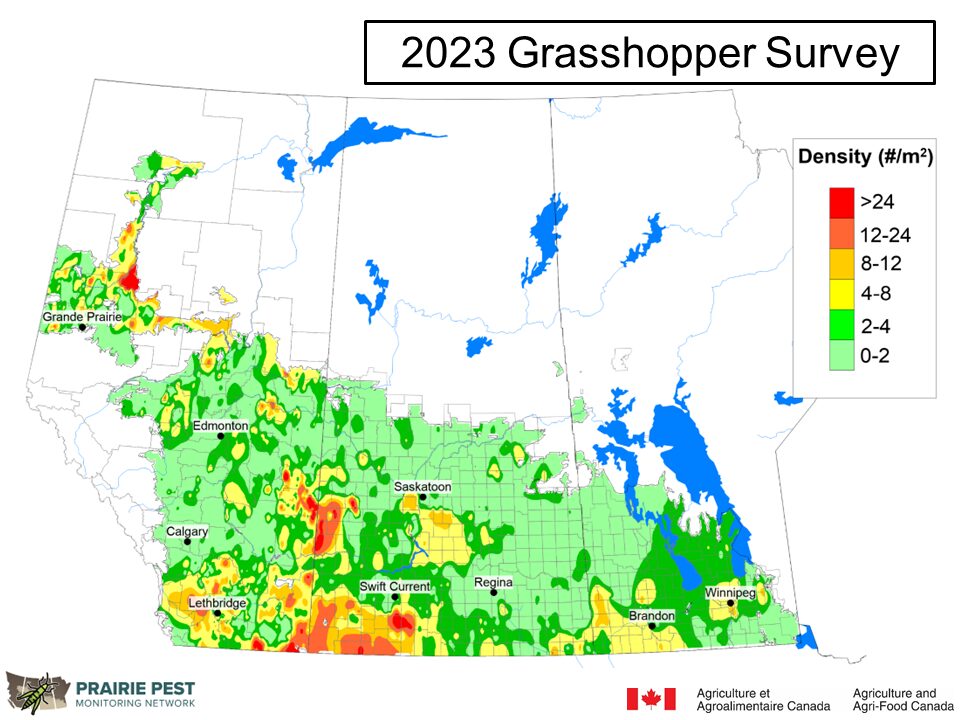
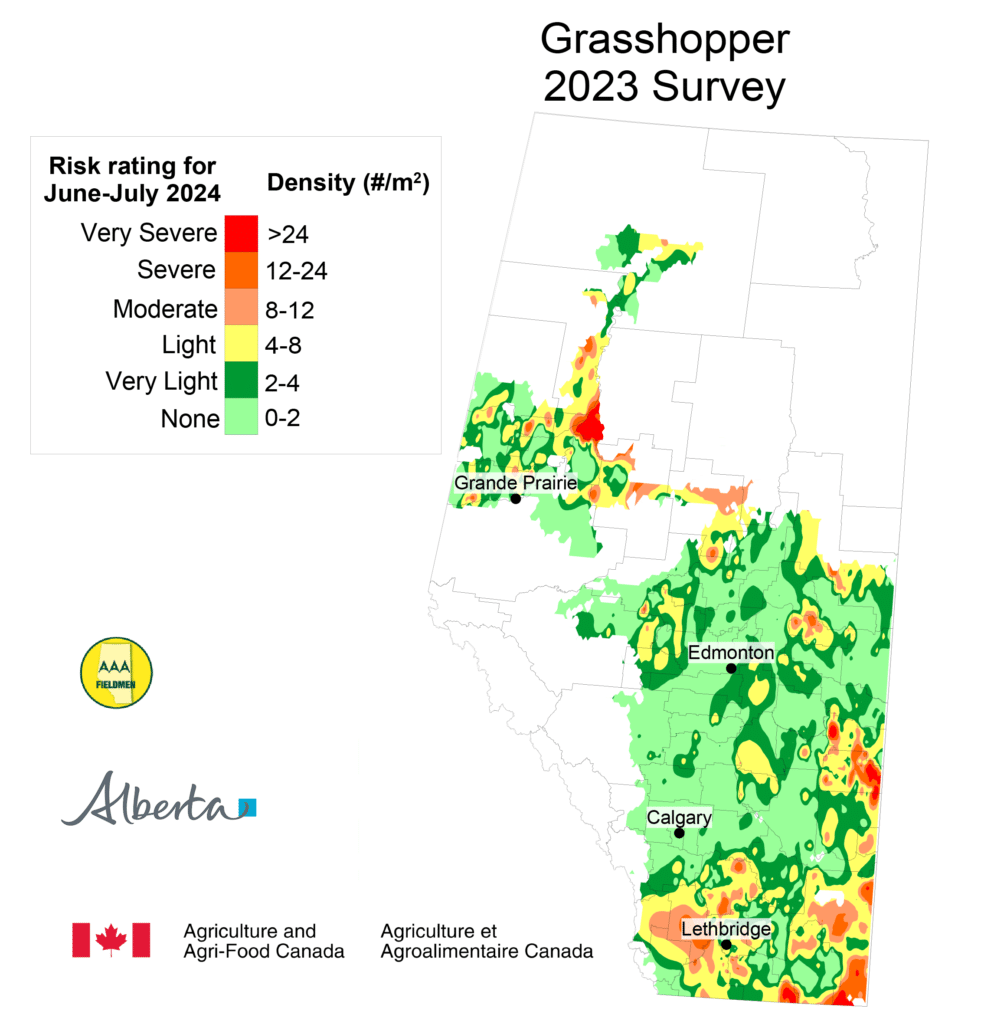
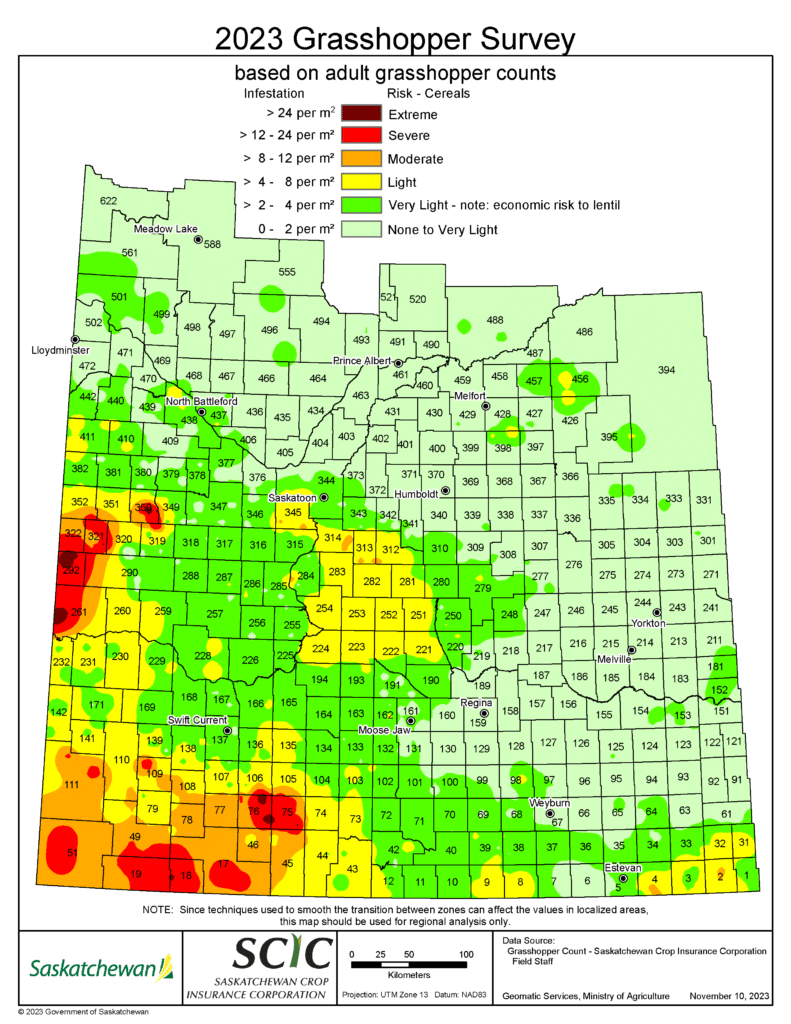
The Ministry of Saskatchewan‘s 2023 grasshopper survey results map.
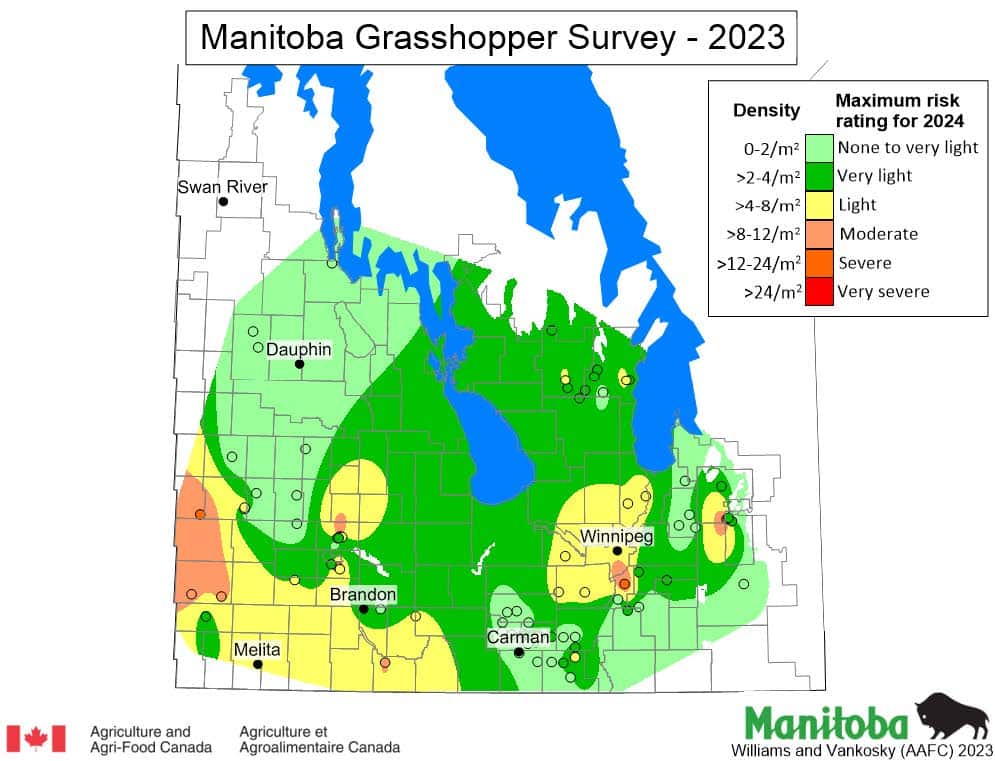
Additional insect monitoring resources

- Ensure proper identification – Use these guides to help you accurately identify pest insects:
- Watch for beneficial insects too – Use the Field Heroes scouting guides to ensure helpful crop insects aren’t mistaken for hurtful ones
- Follow thresholds and control recommendations using these guides:
- The Canola Council of Canada’s Canola Encyclopedia and Canola Watch insect fundamentals articles
- The Oilseeds chapter of the Western Committee on Crop Pests Integrated Control of Insect Pests of Crops guide
Published April 30, 2024


